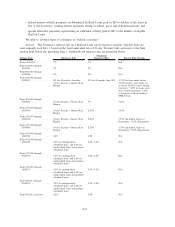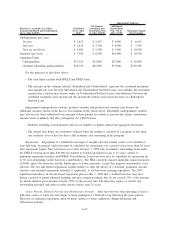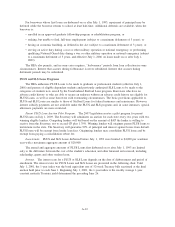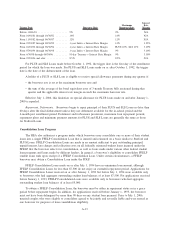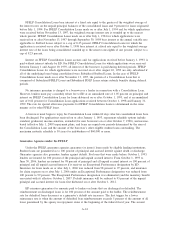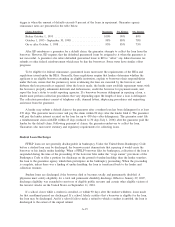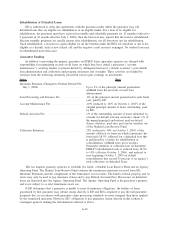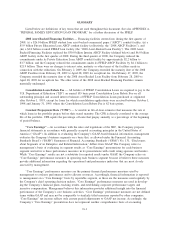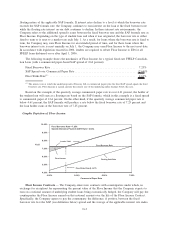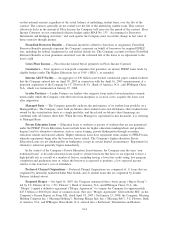Sallie Mae 2008 Annual Report Download - page 237
Download and view the complete annual report
Please find page 237 of the 2008 Sallie Mae annual report below. You can navigate through the pages in the report by either clicking on the pages listed below, or by using the keyword search tool below to find specific information within the annual report.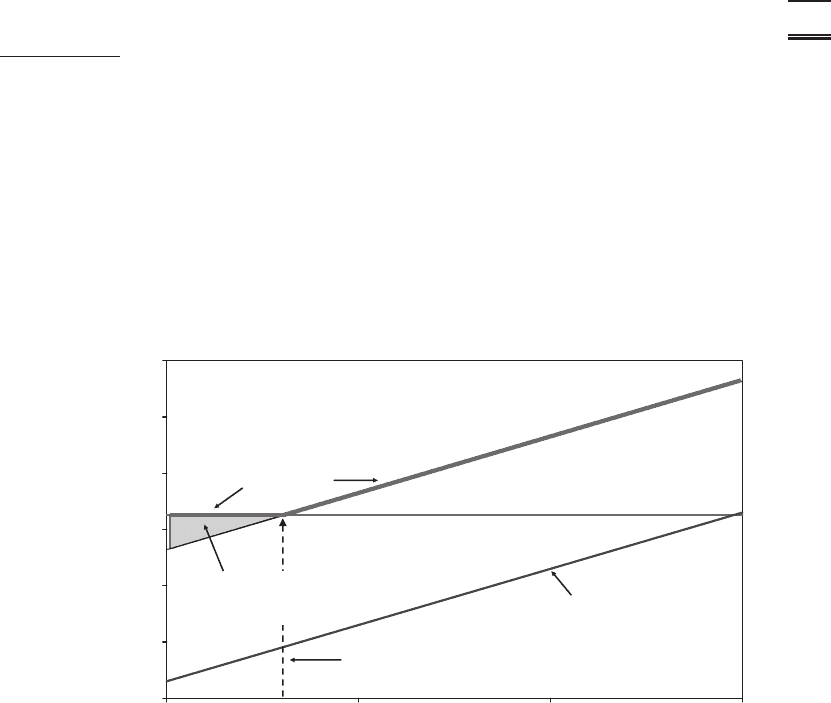
floating nature of the applicable SAP formula. If interest rates decline to a level at which the borrower rate
exceeds the SAP formula rate, the Company continues to earn interest on the loan at the fixed borrower rate
while the floating rate interest on our debt continues to decline. In these interest rate environments, the
Company refers to the additional spread it earns between the fixed borrower rate and the SAP formula rate as
Floor Income. Depending on the type of student loan and when it was originated, the borrower rate is either
fixed to term or is reset to a market rate each July 1. As a result, for loans where the borrower rate is fixed to
term, the Company may earn Floor Income for an extended period of time, and for those loans where the
borrower interest rate is reset annually on July 1, the Company may earn Floor Income to the next reset date.
In accordance with legislation enacted in 2006, lenders are required to rebate Floor Income to ED for all
FFELP loans disbursed on or after April 1, 2006.
The following example shows the mechanics of Floor Income for a typical fixed-rate FFELP Consolida-
tion Loan (with a commercial paper-based SAP spread of 2.64 percent):
Fixed Borrower Rate ...................................................... 7.25%
SAP Spread over Commercial Paper Rate ....................................... (2.64)%
Floor Strike Rate
(1)
....................................................... 4.61%
(1)
The interest rate at which the underlying index (Treasury bill or commercial paper) plus the fixed SAP spread equals the fixed
borrower rate. Floor Income is earned anytime the interest rate of the underlying index declines below this rate.
Based on this example, if the quarterly average commercial paper rate is over 4.61 percent, the holder of
the student loan will earn at a floating rate based on the SAP formula, which in this example is a fixed spread
to commercial paper of 2.64 percent. On the other hand, if the quarterly average commercial paper rate is
below 4.61 percent, the SAP formula will produce a rate below the fixed borrower rate of 7.25 percent and
the loan holder earns at the borrower rate of 7.25 percent.
Graphic Depiction of Floor Income:
4.00%
5.00%
6.00%
7.00%
8.00%
9.00%
10.00%
4.00% 5.00% 6.00% 7.00%
Commercial Paper Rate
Floor Strike Rate @ 4.61%
Lender Yield
Floor Income
Fixed Borrower Rate = 7.25%
Special Allowance Payment (SAP) Rate = 2.64%
Floating Debt Rate
Fixed Borrower Rate
Yield
Floor Income Contracts — The Company enters into contracts with counterparties under which, in
exchange for an upfront fee representing the present value of the Floor Income that the Company expects to
earn on a notional amount of underlying student loans being economically hedged, the Company will pay the
counterparties the Floor Income earned on that notional amount over the life of the Floor Income Contract.
Specifically, the Company agrees to pay the counterparty the difference, if positive, between the fixed
borrower rate less the SAP (see definition below) spread and the average of the applicable interest rate index
G-3


